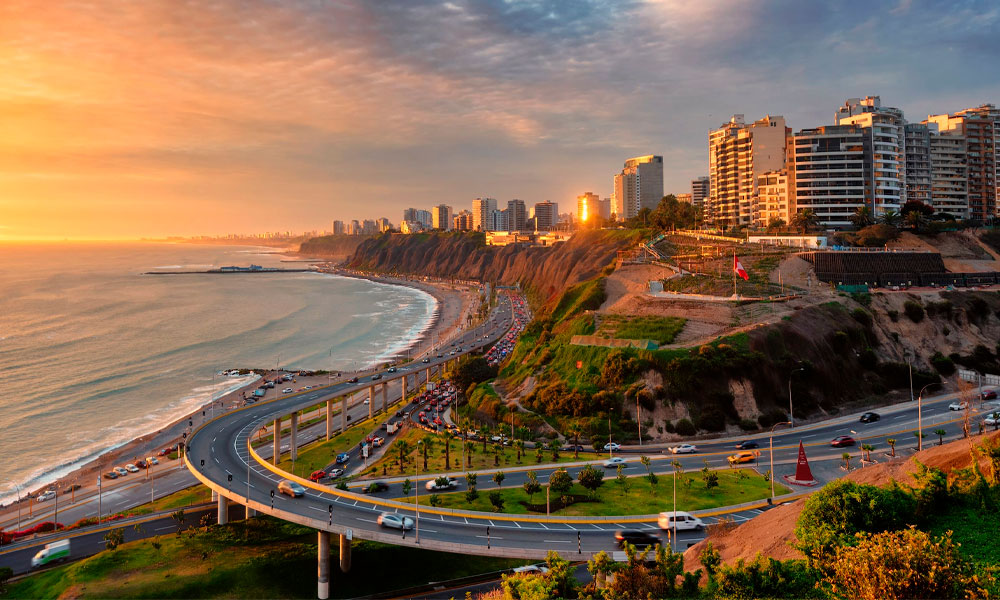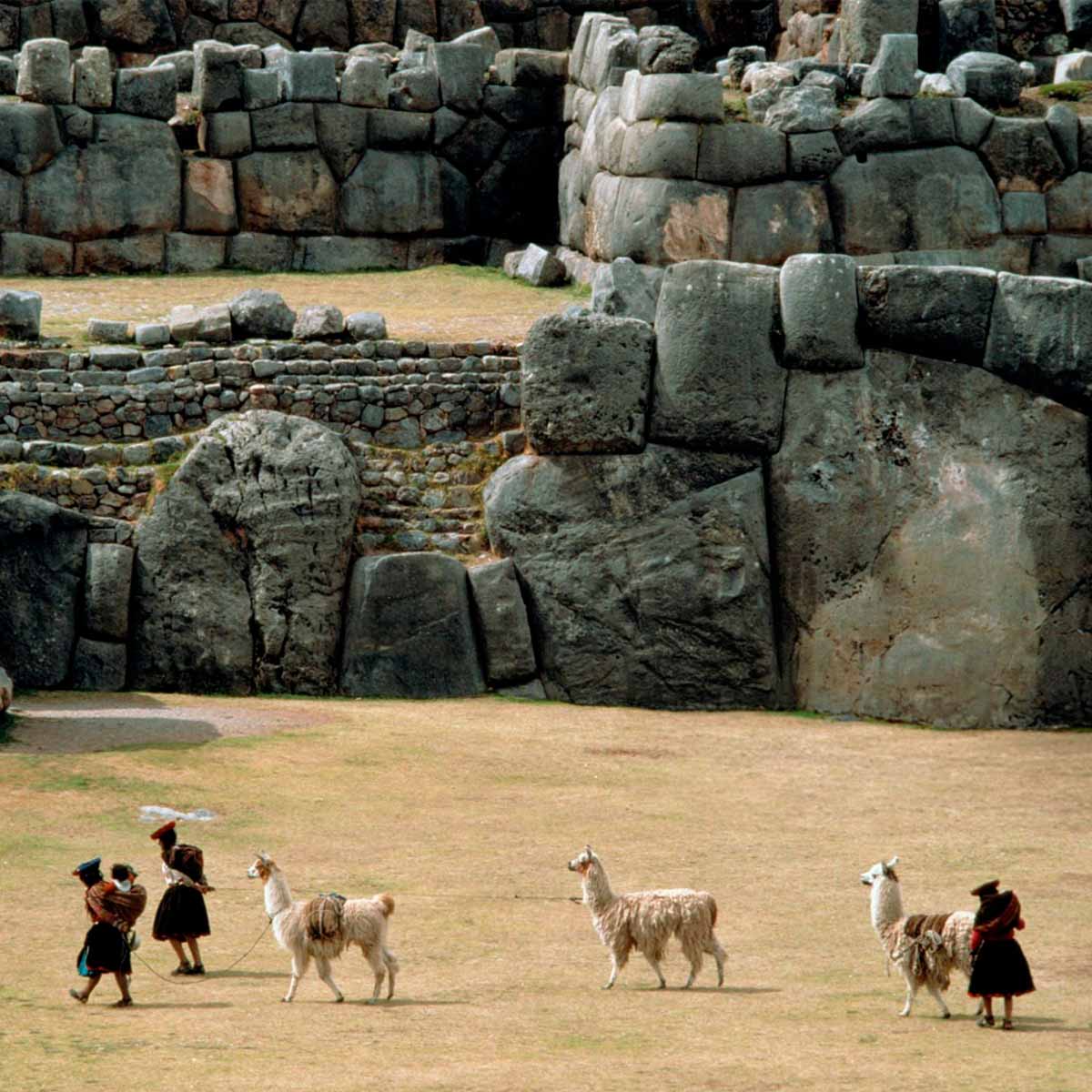
Lima, the political and economic capital of Peru, is the largest and most populated city in the country, holding more than 9 million inhabitants. Located along the Pacific Ocean coast, Lima extends at an average altitude of 101 meters above sea level. Its coastal location distinguishes it right away from other tourist destinations in the country, such as Cusco or Arequipa, which are found in the Andean highlands.
The fact that Lima is at such a low altitude is a good thing because it works as an acclimatization zone for international travelers. It is an essential resting point before climbing to the heights of Cusco (3,399 masl), Puno (3,800 masl) or any trip through Peru. Beyond its logistics role, Lima is known worldwide for its famous cuisine and its historical richness, with a colonial center that is a World Heritage Site.
This guide is designed to cover the topic of the altitude of Lima and its effects on travelers. We will analyze in detail its climate, its geographical features and its role as the main connection center that allows visitors to start their Peruvian Tour safely and efficiently.
Where is the City of Lima located?
Lima is located in the central region of the Peruvian coast, an area that spreads over a desert plain bordering the Pacific Ocean directly. Politically, it is the country's capital and heads the department and province of the same name. The city's coastline is known for large cliffs, especially notable in the tourist districts of Miraflores and Barranco, and its main port is located in the Constitutional Province of Callao, which holds the international airport.
Geographically, the city sits on one of the driest deserts in the world. Its urban development has only been possible thanks to the river systems that descend from the Andes Mountains, mainly the Rímac River, along with the Chillón and Lurín rivers. These rivers have created the valleys that provide the essential water to sustain a metropolis of more than 9 million inhabitants in this coastal desert environment.
The vast metropolitan area of Lima works as the main air and economic hub of Peru. The city's historic center (where the Plaza de Armas is located) and the key modern districts are strategically situated along the coast, making both trade and tourism easy, and solidifying Lima as the logistical starting point for any itinerary in the country.
Lima Altitude
Lima, the capital of Peru, is located in the middle of the coastal desert, at the foot of the western slope of the central Andes. This means that its height is uneven, since the Plaza de Armas is located at about 160 meters above sea level, while the district of Lurigancho-Chosica reaches 950 meters above sea level.
Climate
The city of Lima has an arid and semi-warm climate. The average maximum annual temperature is 21.97 °C (71.4 °F) and the minimum 17 °C (62.7 °F). The climate in Lima is very humid (with relative humidity reaching up to 100%). The temperature on the coast and in Lima fluctuates between 80°F / 28°C in the summer (December to May) and 57°F / 13°C in the winter (June to November).
Altitude of Lima and Cusco
When considering a trip to Cusco, we must also consider altitude sickness and how to prevent its effects from ruining our experience.
Cusco is located at 3,399 meters above sea level, while Lima is only 100 meters away. We clearly see the difference in altitude between these two cities, so we must take into account the altitude of each city in order to enjoy our trip.
What plays against many tourists is altitude sickness, also known as soroche. Remember that, according to experts, people begin to feel discomfort from an altitude of 2,400 meters above sea level.
Some of the main symptoms are: Fatigue, irritability, intense headache, nausea and vomiting. This happens because the body is unable to adapt to the altitude. Oxygen and nitrogen levels and density decrease with altitude. After two or three days, the body begins to adapt.

Consequences of altitude sickness
In most cases, the symptoms of altitude sickness are not permanent and disappear as the person gets used to the place. However, we must be aware of the consequences, since a trip to Cusco can affect us.
Symptoms
- Weakness or tiredness
- Dizziness can cause vomiting
- Headaches
- Nervousness
- Loss of appetite
- Rapid heart rate
- Visual difficulty
- Walking becomes more difficult
Other serious consequences:
- Pulmonary edema at high altitude
- Cerebral edema at high altitude
At this point, it is recommended that the person descend to a lower altitude as quickly as possible. Cusco has different elevations, with Machu Picchu at 2,430 meters above sea level.
Strategies for Acclimatization: How to Prevent Soroche?
Although the altitude of Lima is insignificant (101 msnm), most itineraries in Peru involve a quick ascent to Andean cities like Cusco (3,399 msnm) or Puno (3,800 msnm). Acute Mountain Sickness (Soroche) can appear starting from 2,500 msnm, so a previous and conscious acclimatization is mandatory when traveling from the coast to the highlands.
Medical Prevention Protocol and Diet
- Medical Consultation and Medication: It is always recommended to visit a health professional before the trip. A doctor can prescribe preventive medications that help with acclimatization and reduce the symptoms of soroche.
- Strict Hydration: Dehydration makes the symptoms of altitude sickness worse. It is crucial to stay well hydrated at all times, drinking between 2 to 3 liters of water per day.
- Diet and Digestion: When ascending to high altitude, the digestive system becomes slower. It is recommended to eat light meals during the first days, avoiding meats, sauces, and other foods that are hard to digest. Prioritize a diet rich in vegetables, fruits, and easy-to-digest Andean cereals, like quinua or kiwicha.
Ancestral Andean Remedies and Body Rhythm
- Coca Leaf: The most popular ancestral remedy in the Andes is the coca leaf. Its natural alkaloids have an effect that helps the body process oxygen better. It is recommended to consume coca tea (infusion) or, in the traditional way, chew the leaf to help lessen mild symptoms.
- Slow Down the Pace: The golden rule when arriving at high-altitude destinations is to reduce physical effort. Avoid strenuous exercise, walk slower, and dedicate the first 24 hours to resting. Allowing the body to adapt gradually is the most effective strategy.
 |  |
Frequently Asked Questions
What is the location of Lima?
Lima, the capital of Peru, is located on the central Pacific coast, surrounded by coastal deserts and spread across the valleys of the Chillón, Rímac and Lurín rivers. It covers an area of 2,672 km.What is the average altitude of the city of Lima?
Lima is a city at sea level; the average altitude of the historic center is 161 meters above sea level.What is the population of Lima?
In 2021, the population of Metropolitan Lima and its districts was estimated at 9,751,717 inhabitants, which represents almost 30% of the total population of Peru. The population density is approximately 3,000 people per square kilometer.What is the predominant religion in Lima?
Christianity is the dominant religion in Lima. However, due to the historical influence of the Inca religion after the Spanish conquest, Peru is known for its religious syncretism. In recent years, Judaism, Buddhism, Hinduism and Islam have also gained presence, thanks to immigration.What is the climate in Lima?
Although Lima is located in the tropics and in a desert, its climate is temperate due to the proximity to the Pacific Ocean. During the summer, from December to April, temperatures range between 18°C and 29°C. In winter, from June to October, temperatures vary between 14°C and 19°C, with grey skies, morning drizzle and high humidity. The months of May and November are transitional, with sudden changes in the weather.What is the main currency in Lima?
The main currency in Peru is the Sol. In most local markets and shops, the Sol is used, although in banks you can also make transactions in US dollars (USD). Real estate transactions are usually done in USD.What is the population composition of Lima?
Lima's population is diverse, made up of mestizos, Europeans (descendants of Spaniards, Germans, Italians, and French), Afro-Peruvians, and Asians (mainly from China and Japan). This ethnic mix has contributed to Peru being one of the most prominent culinary destinations in the world, with influences from Chinese and Italian cuisine that have created unique Peruvian dishes.How to get to Lima?
1. By Land: The Pan-American Highway crosses the country from south to north, connecting with all the cities on the coast and with countries such as Chile and Ecuador. There are also highways that connect Lima with the cities of the Andes and the Peruvian jungle.
2. By Plane: From Jorge Chávez International Airport, located in the province of Callao, 30 minutes from downtown Lima, you can take flights to any city in Peru or to other countries.
Best way to travel from Lima to Cusco: The fastest way to travel from Lima to Cusco is by flying from Jorge Chavez Airport to Alejandro Velasco Astete Airport in Cusco. The flight takes about an hour. For travelers who prefer to explore more of the country, you can take a bus from Lima to Cusco, passing through Abancay on a 20-hour journey, or via Arequipa and Juliaca on a 24-hour journey.What is the official language of Lima, Peru?
The official languages in Peru are Spanish, Quechua, and Aymara. Spanish is the most widely spoken, with about 80% of the population using it as their first language. Quechua, an indigenous language passed down through generations, is spoken by about 13% of the population, and Aymara is spoken by about 3%. Other indigenous languages such as Shipibo-Conibo, Ashaninka, and Awajún are also spoken.How to stay connected in Lima?
Most hotels, restaurants and cafes in Lima offer free Wi-Fi. It is also possible to purchase a local chip to have mobile data during your stay.

Best Tours in Peru
Peru offers fascinating experiences that reveal natural landscapes, historical monuments, and living cultures, captivating those who seek adventure and discovery in every corner of its territory. Get to know the most outstanding tours:
Other trips in Peru
If you want to visit Machu Picchu, we recommend you to book your Machu Picchu Entrance Tickets in advance, so you will enjoy your Vacation in Machu Picchu without any problem.




